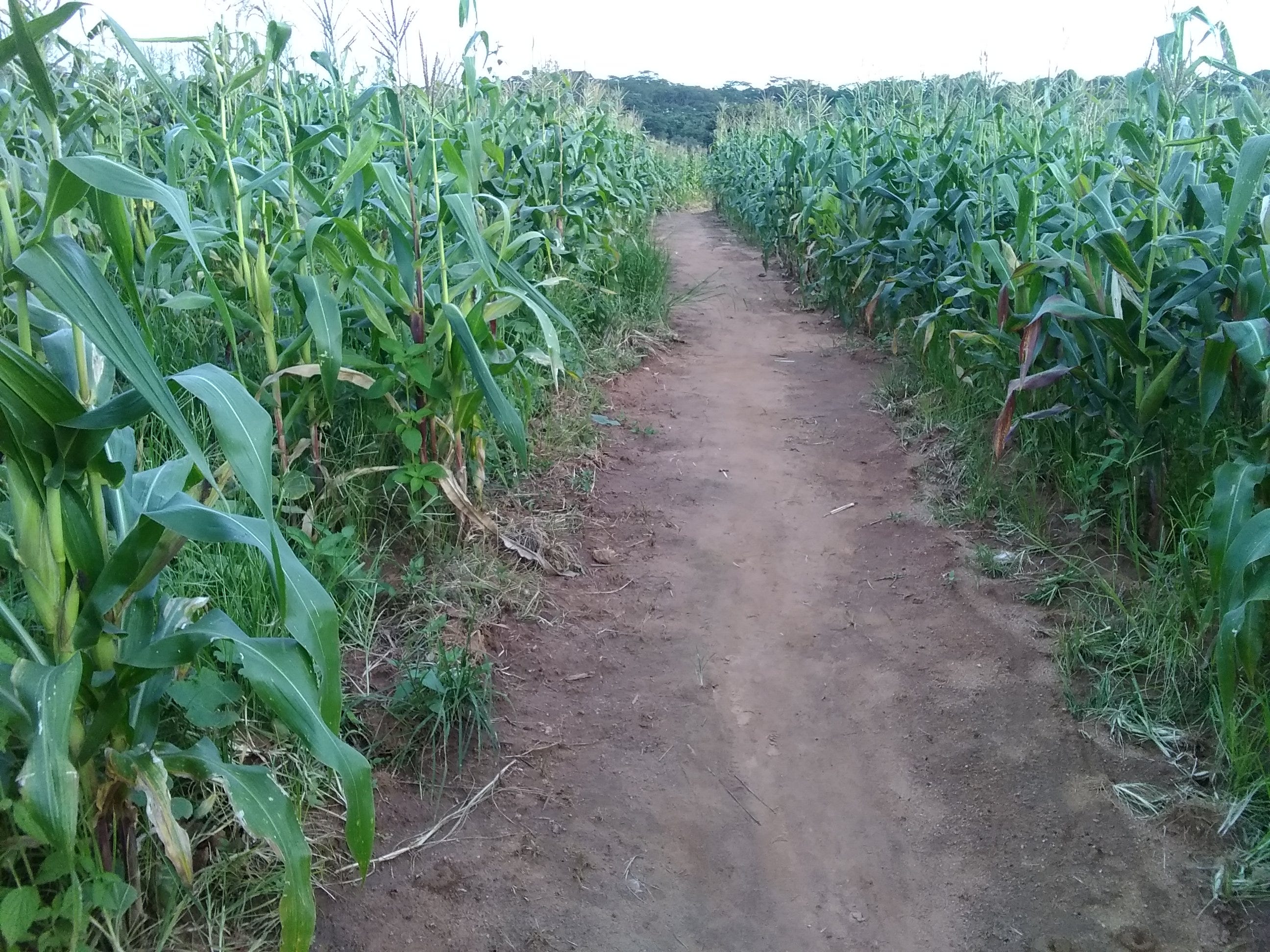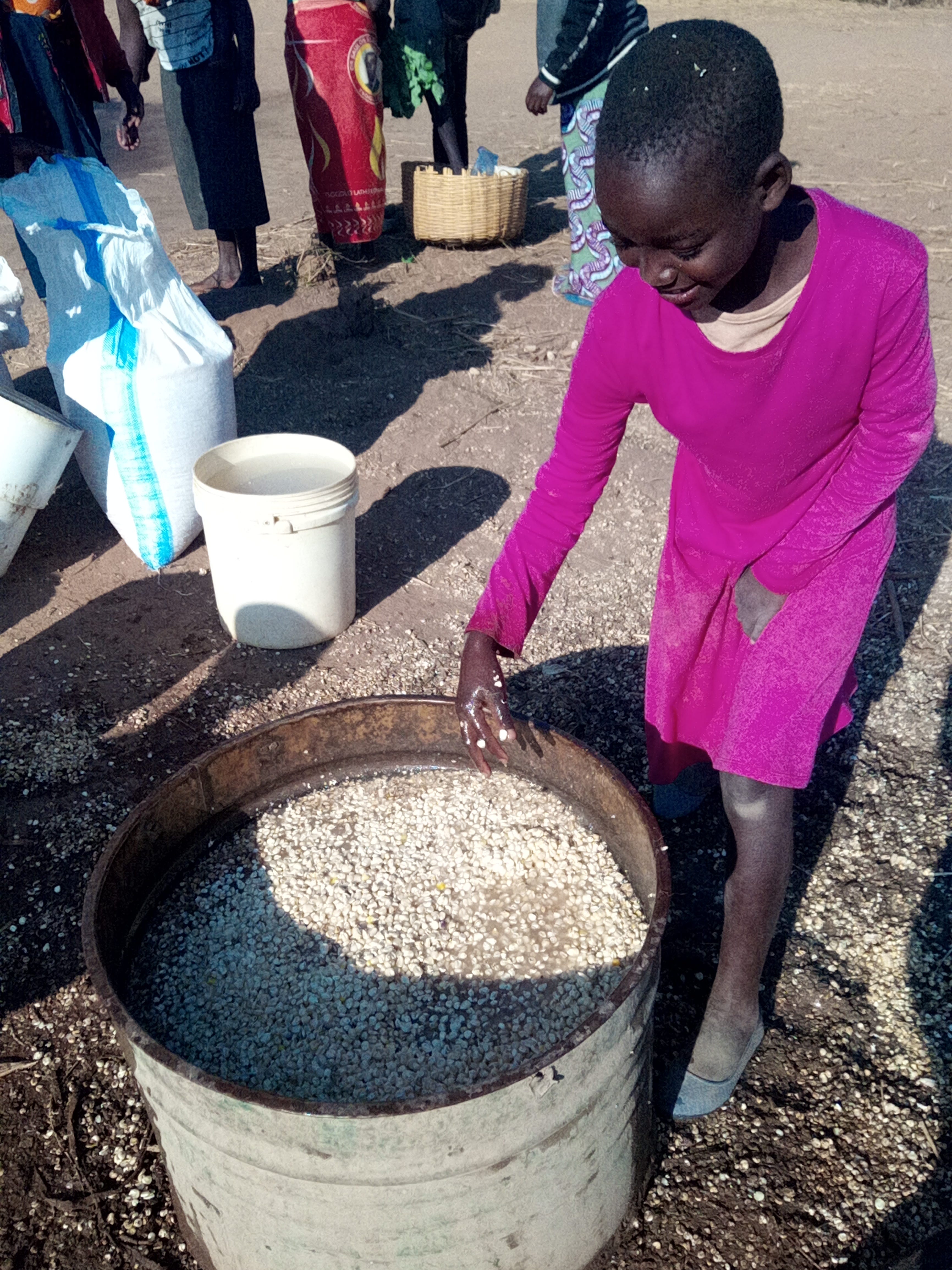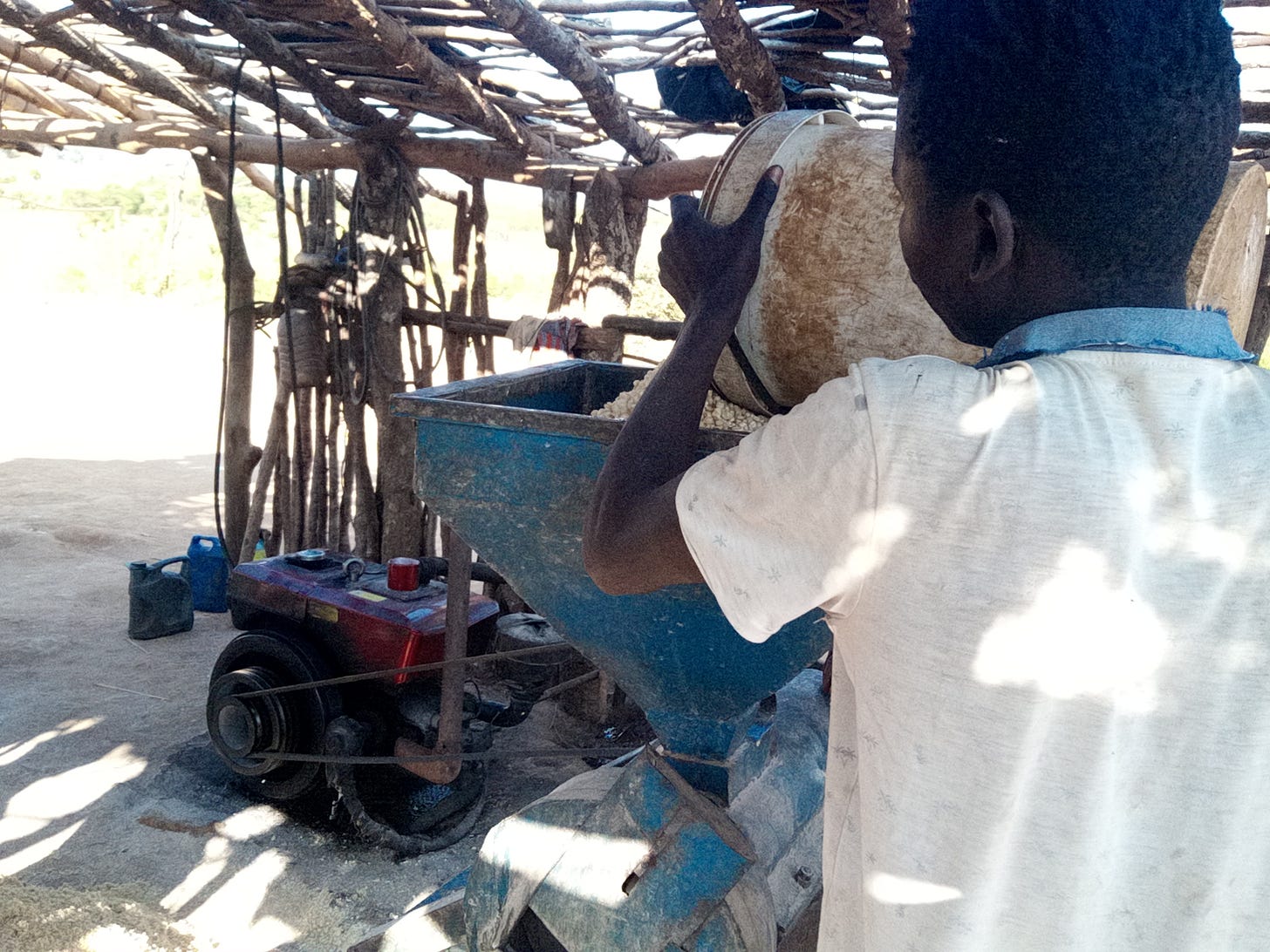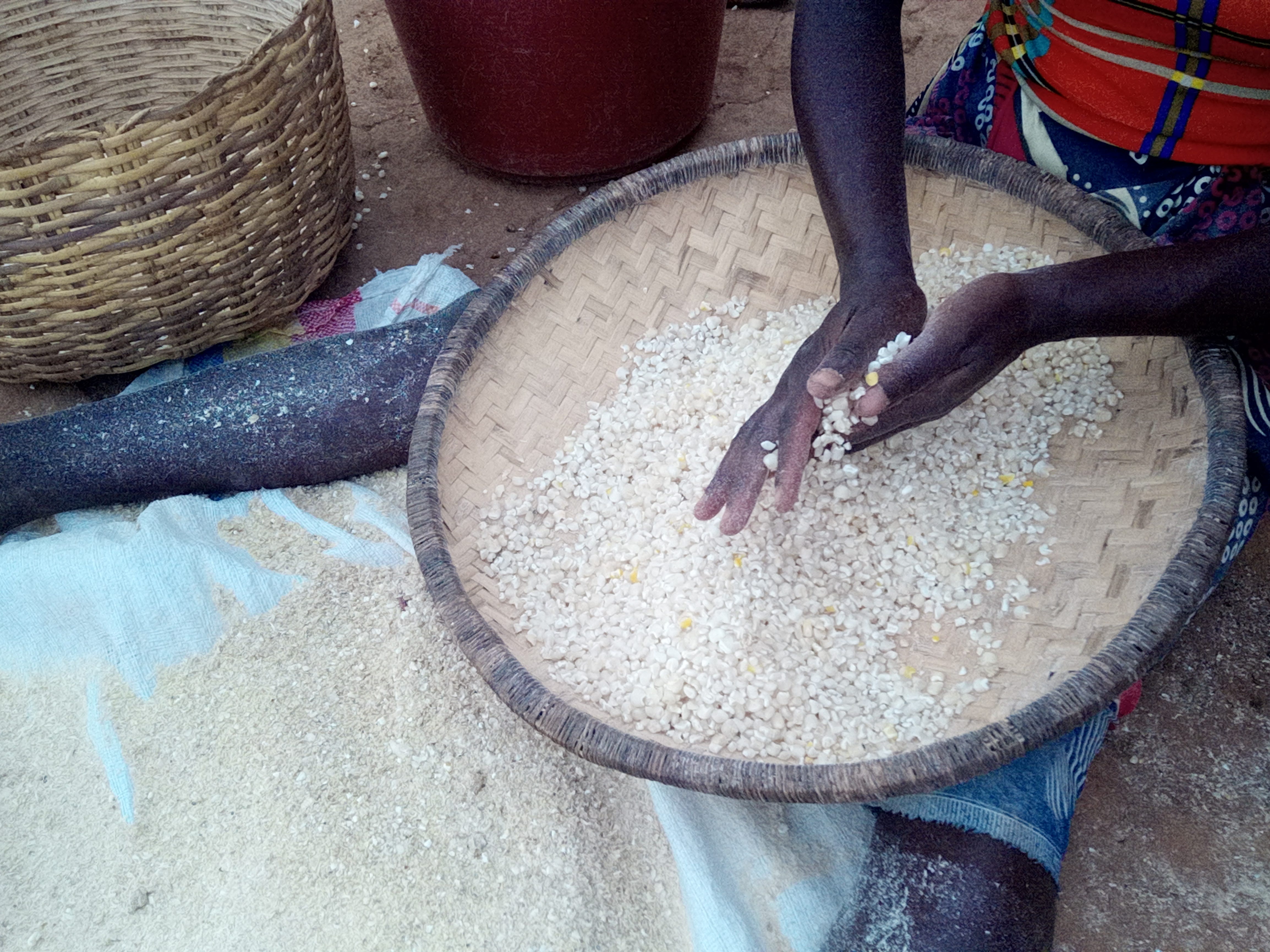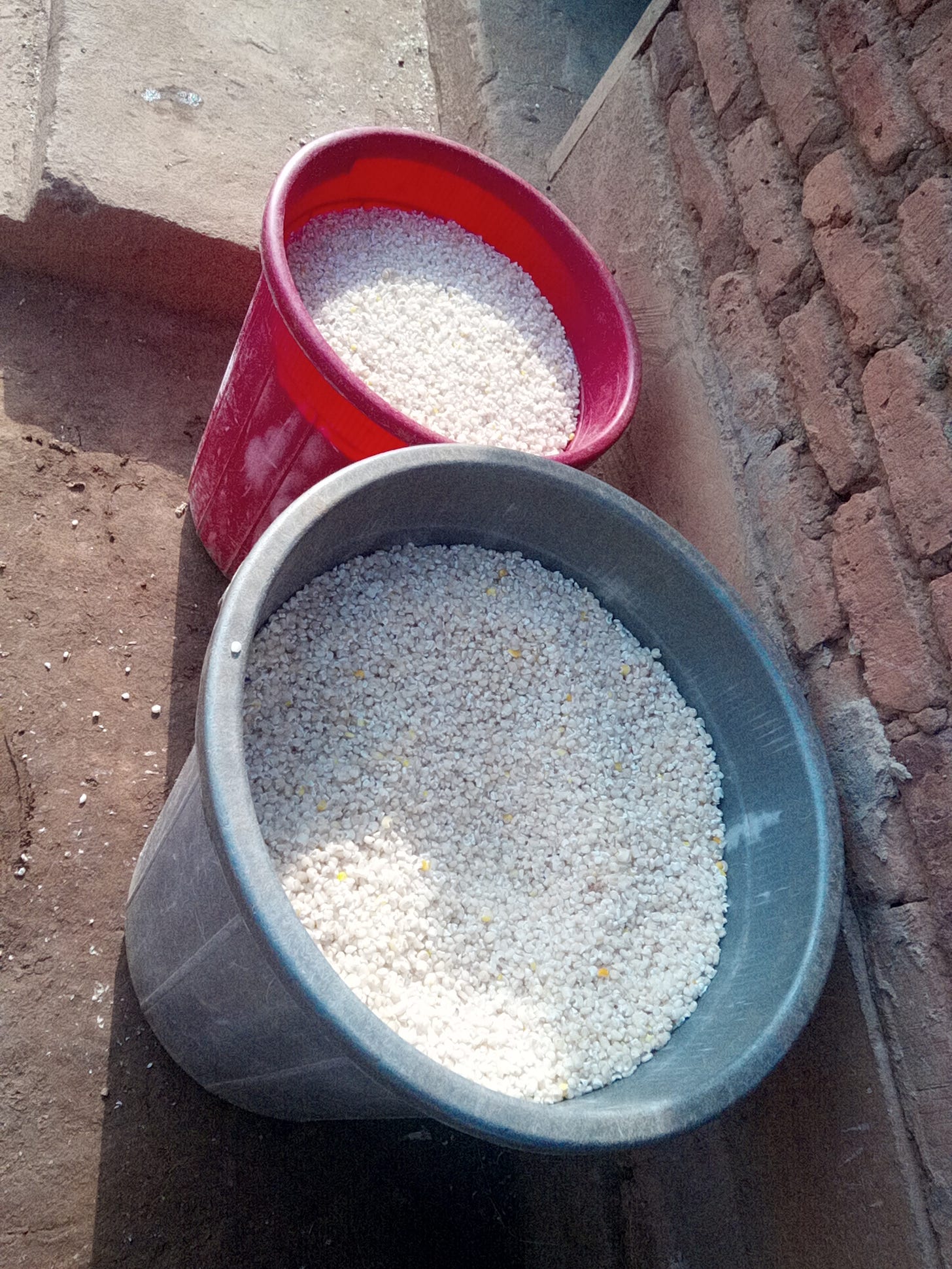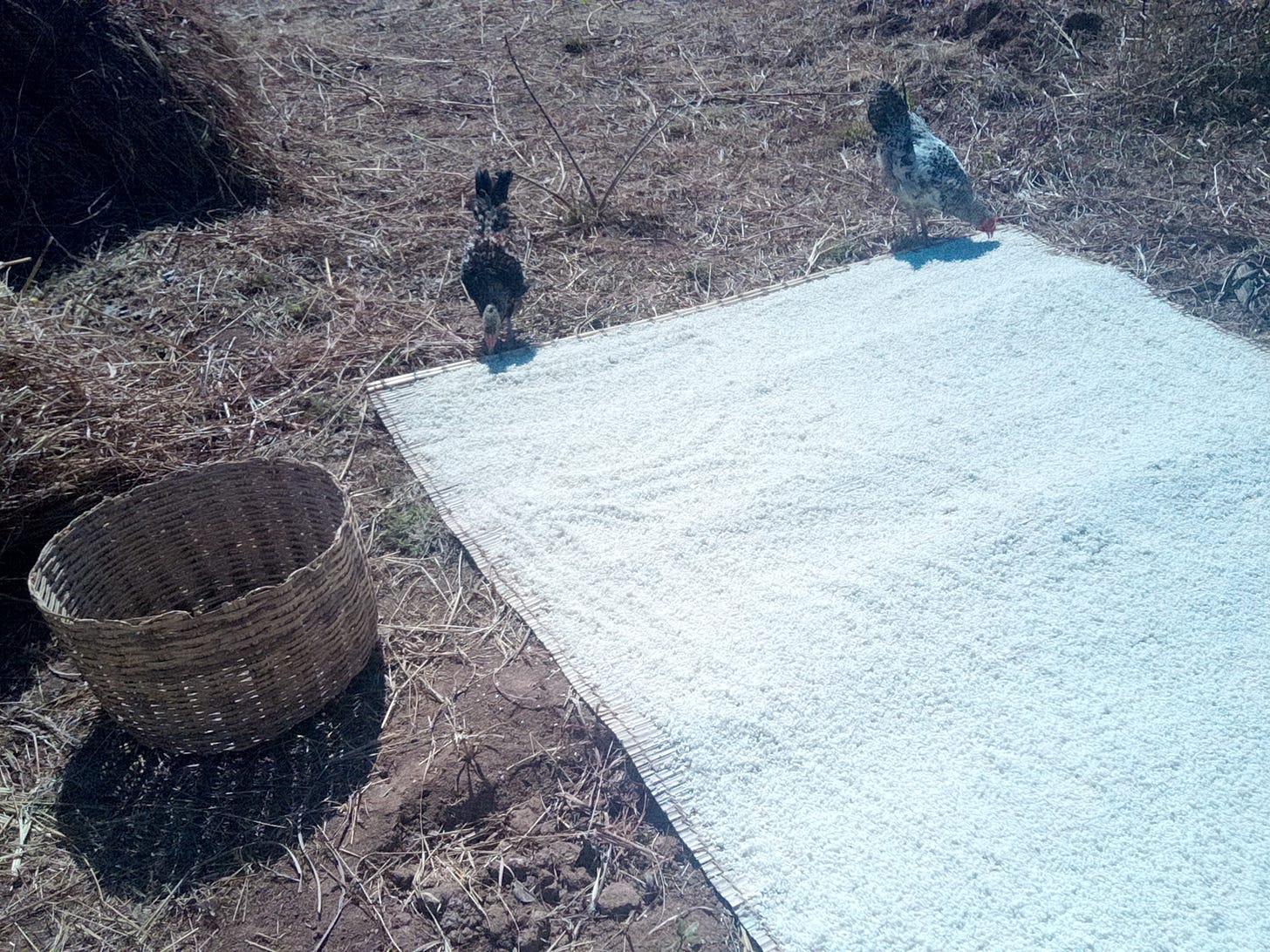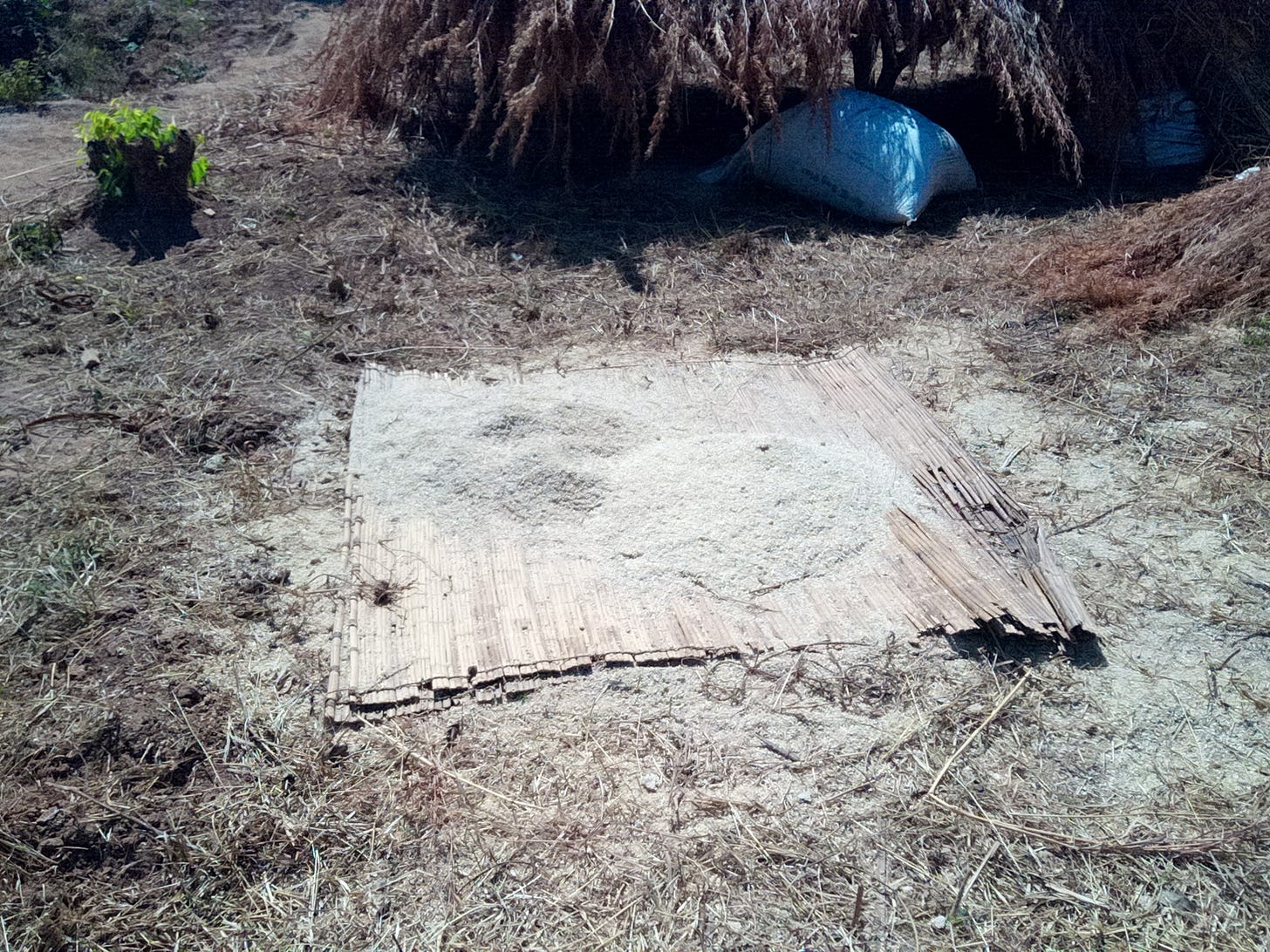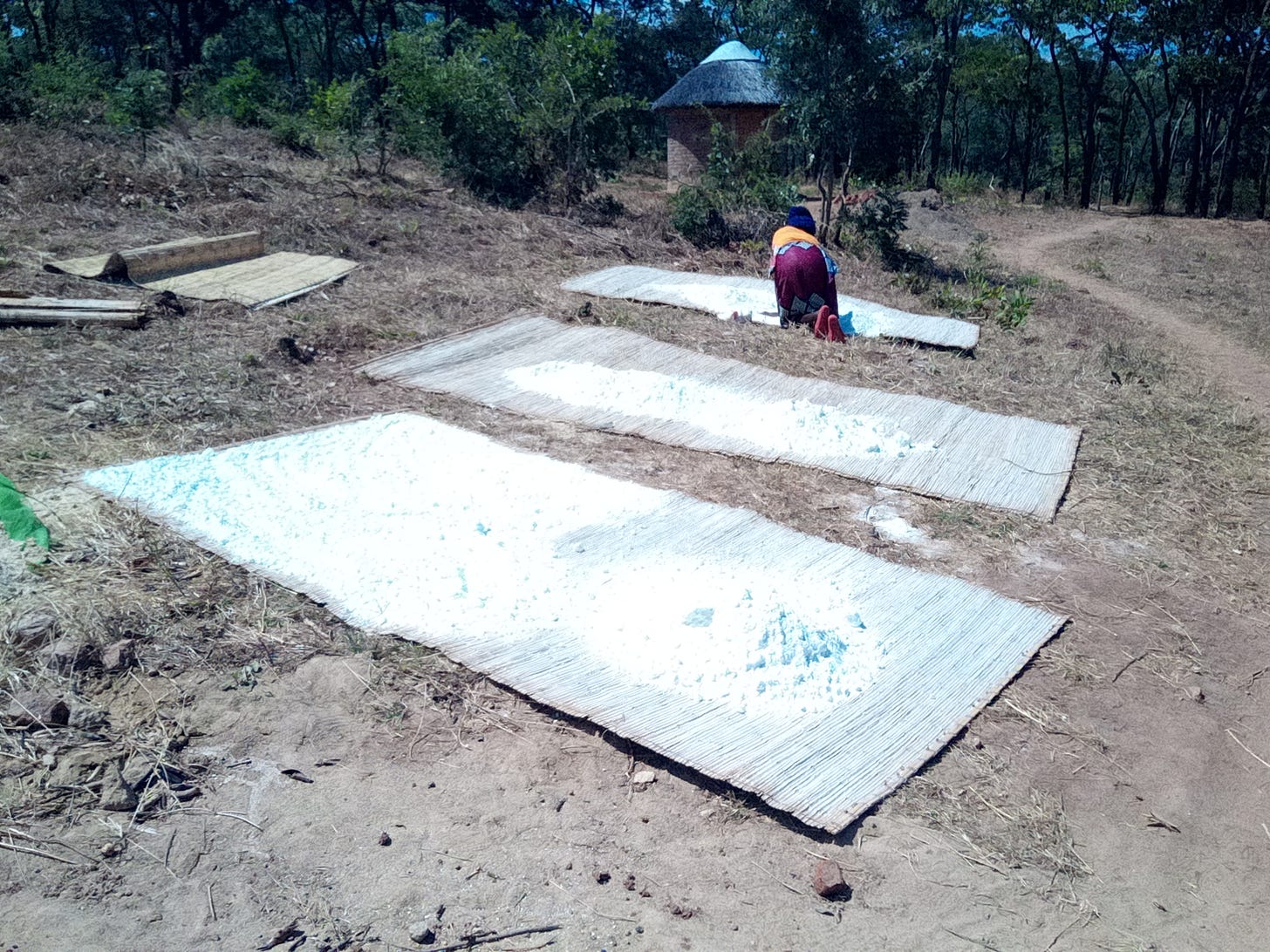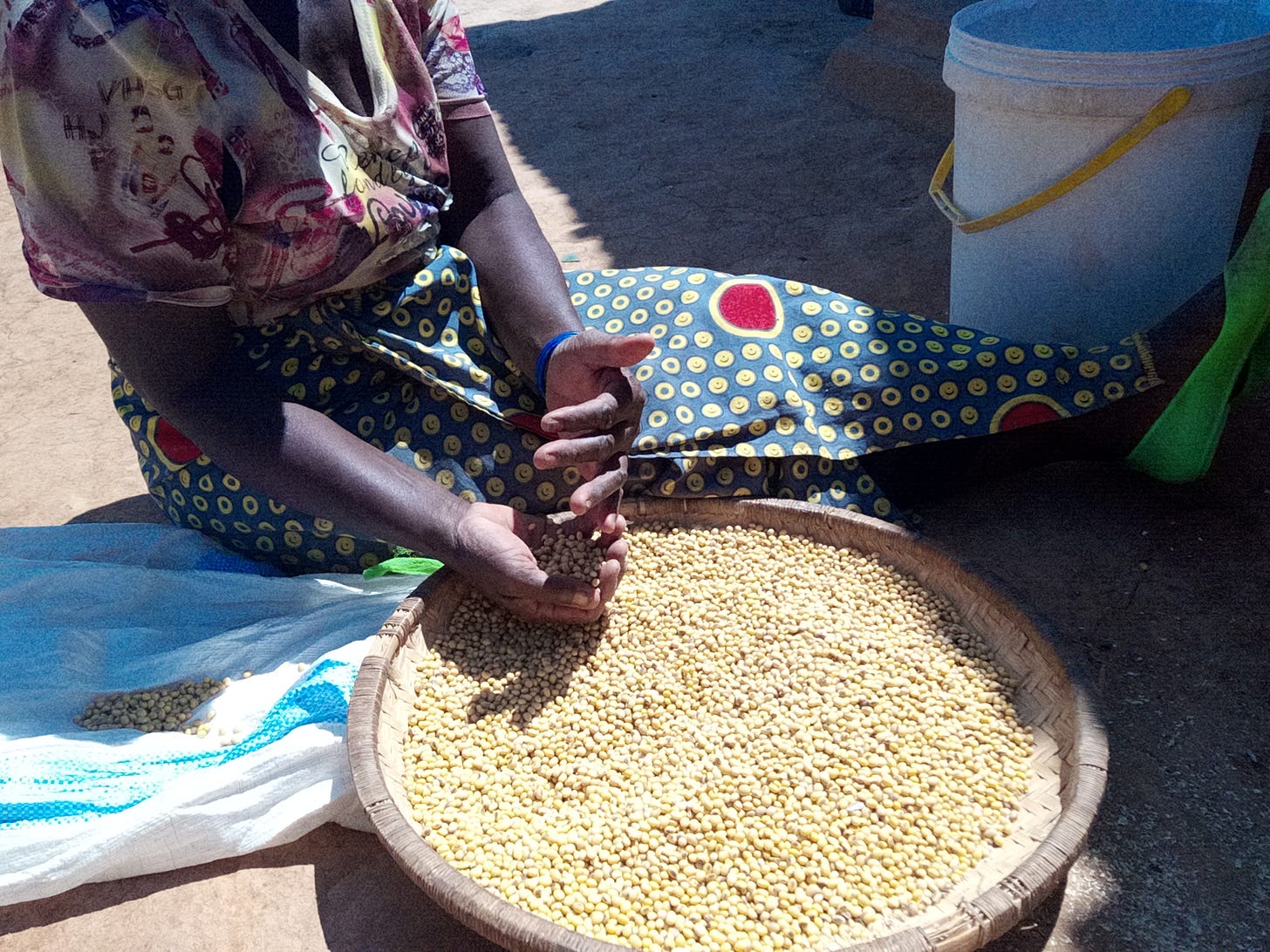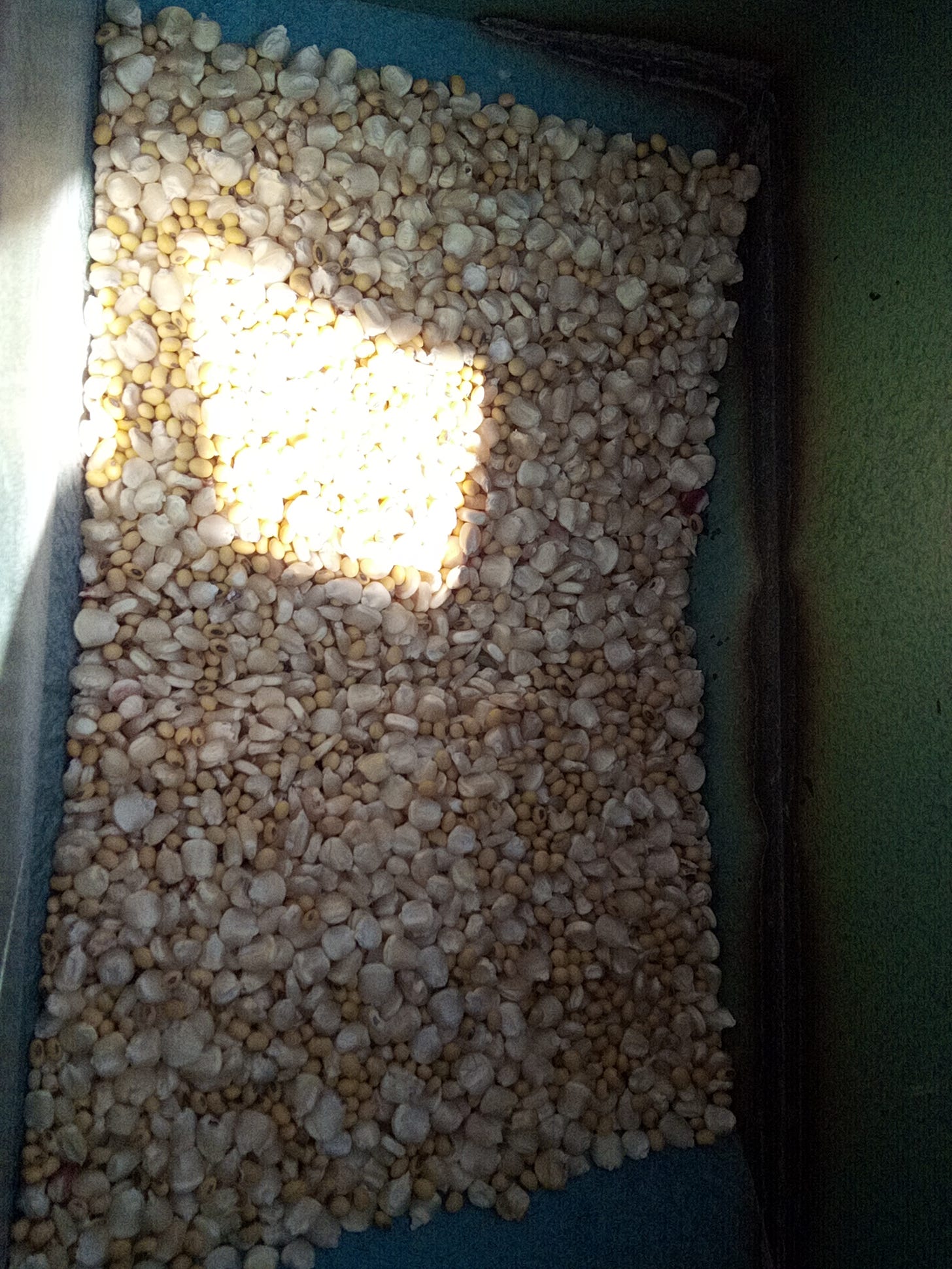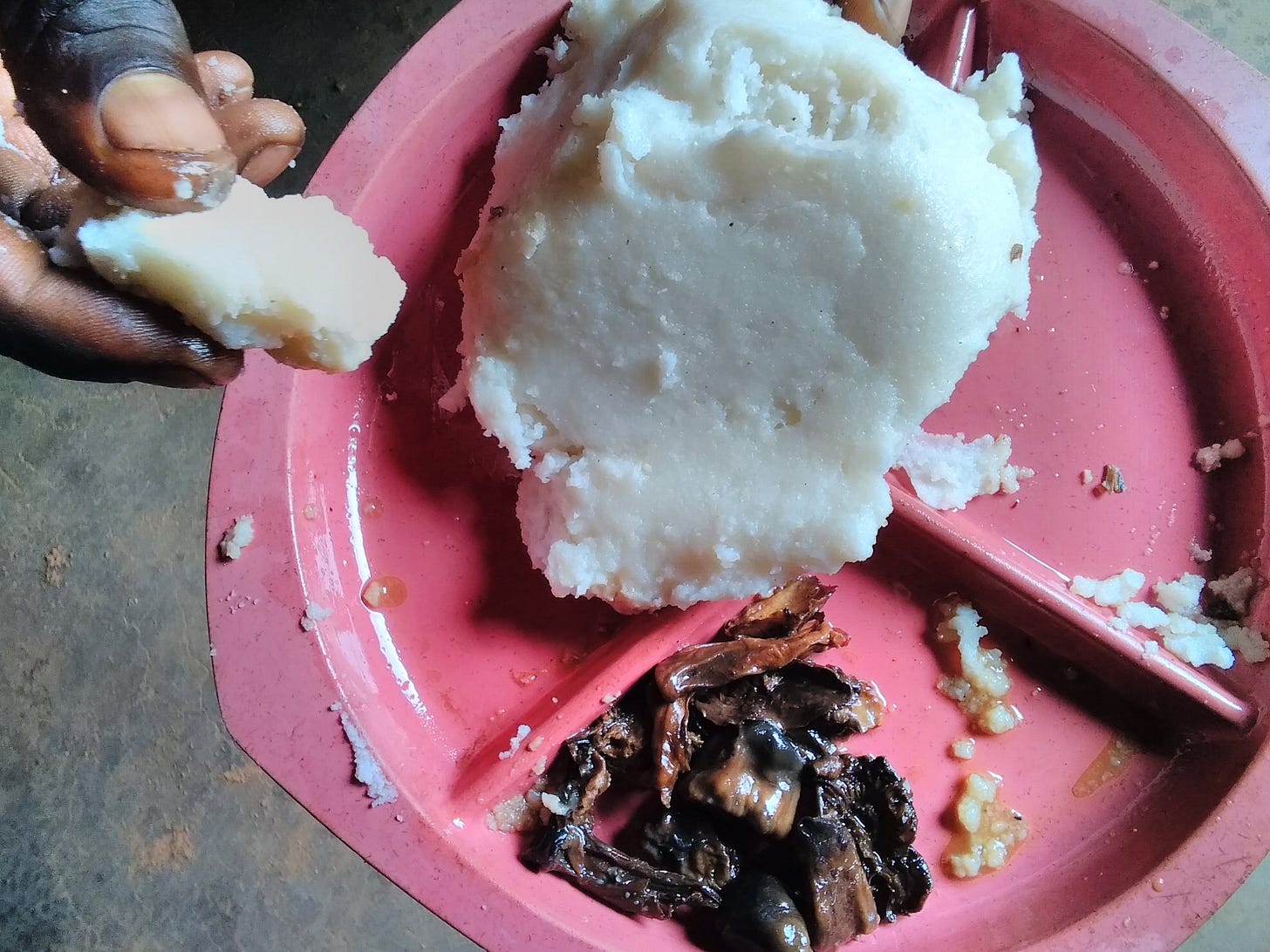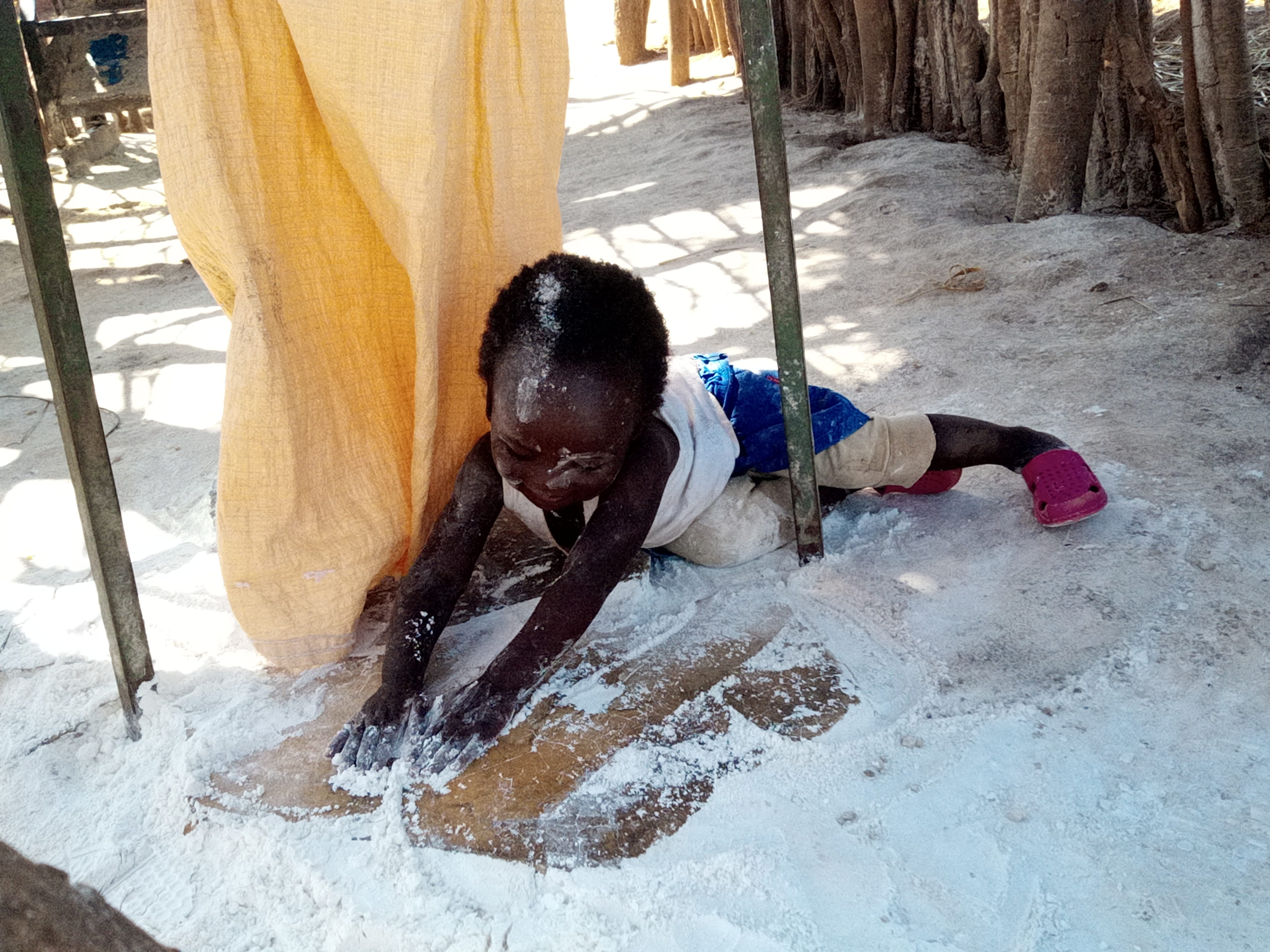Do you spend a lot of time wondering how people in Malawi turn their dry corn into flour? Then this is your lucky day.
In your average Malawian village, milling dry corn is a weekly routine, like going to the grocery is in first world countries. Traditionally, corn was ground manually, using a large wooden mortar and pestle. These days, however, corn is almost always ground using a mechanized mill powered by an engine. Earlier this year, I went to document the corn milling process at our local mill, not just for people who are unfamiliar with the concept - including future Malawian generations - but also to find out how much time, energy and resources our family use per kg of corn flour we gain.
I should add; all photos I share in newsletters with the title ‘documentation’ are either taken by me, my Malawian family or other people using our cameras (which are just phone cameras). That is unless otherwise specified. All photos are also taken in and around our village, Kanyata.
Step #0 - getting the corn in the first place
Corn is the staple food in Malawi and much of sub-Saharan Africa. Most people in the villages - which is most people in the country - grow their own corn during the rainy season. In theory, every family store their dry corn for their own consumption needs, although in practice, a lot of people sell their corn to pay of debts. What remains is taken to the mill.
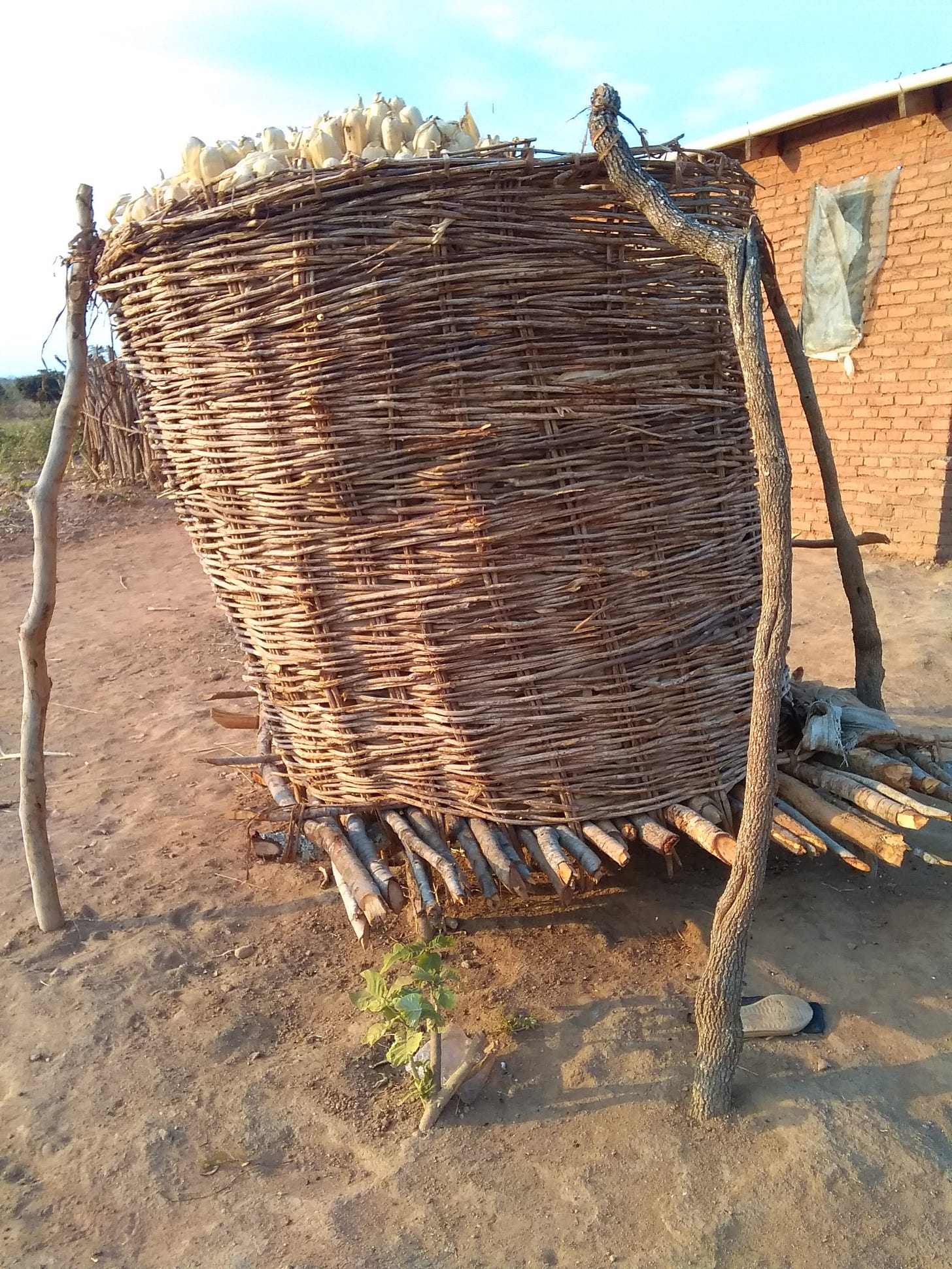
Step #1 - packing the bags and heading to the mill
Mills are not found in every village. Previously, our folks had to walk 4-6 km to the nearest mill, either carrying their corn on their heads, on bike carriers or in ox-carts. Needless to say, that’s a lot of work, and sometimes you get there only to find that the mill is lacking petrol/electricity or is down for maintenance. Sometimes the boys operating the mill have gone off somewhere and cannot be found.
A diesel powered corn mill came to our village in 2020, so thankfully, we only have to walk 200 meters to mill our own corn. Still, a lot of people come here from neighboring villages to mill their corn, sometimes as far as 6 km if the electricity grid is down (which happens a lot).
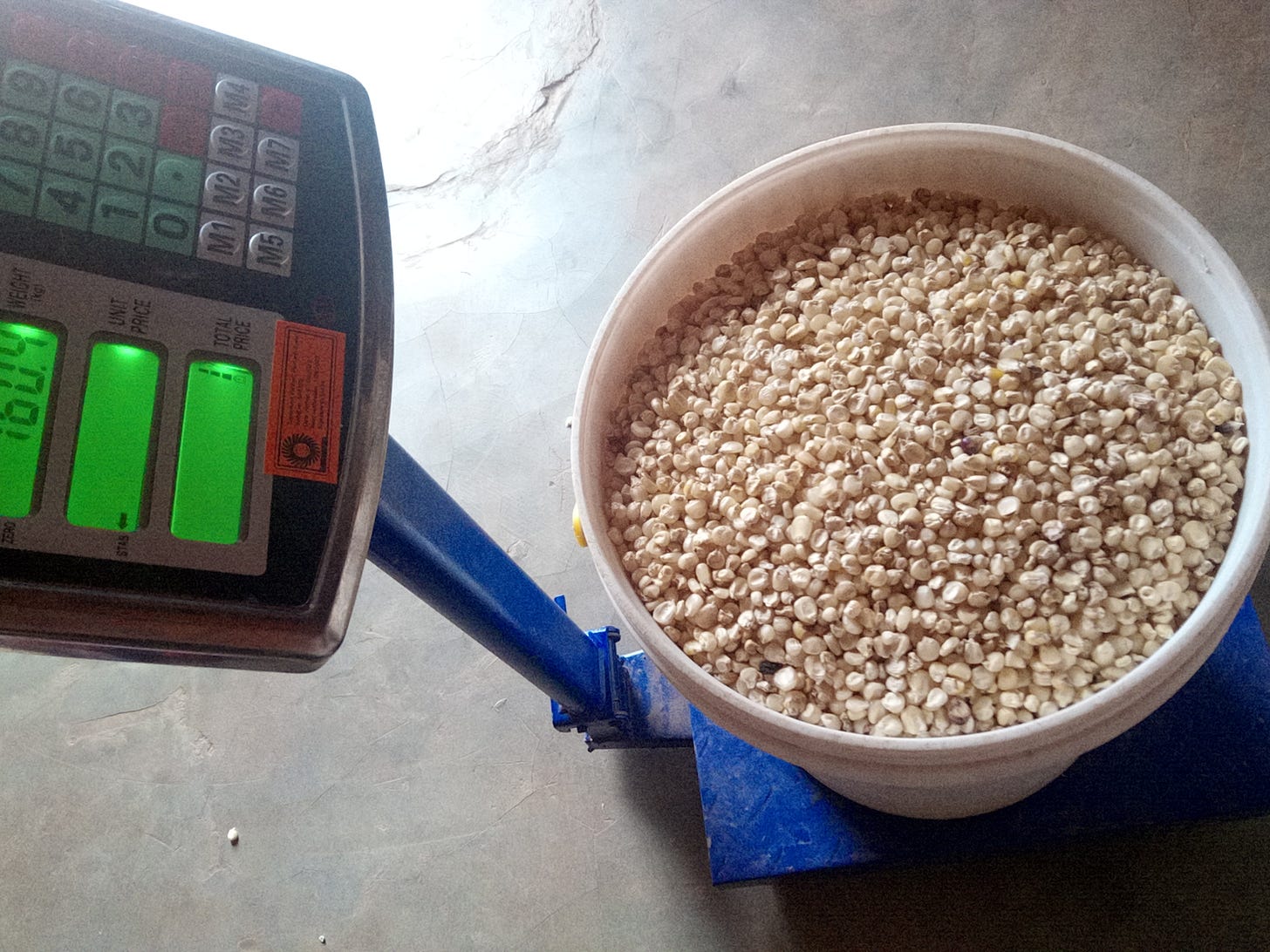
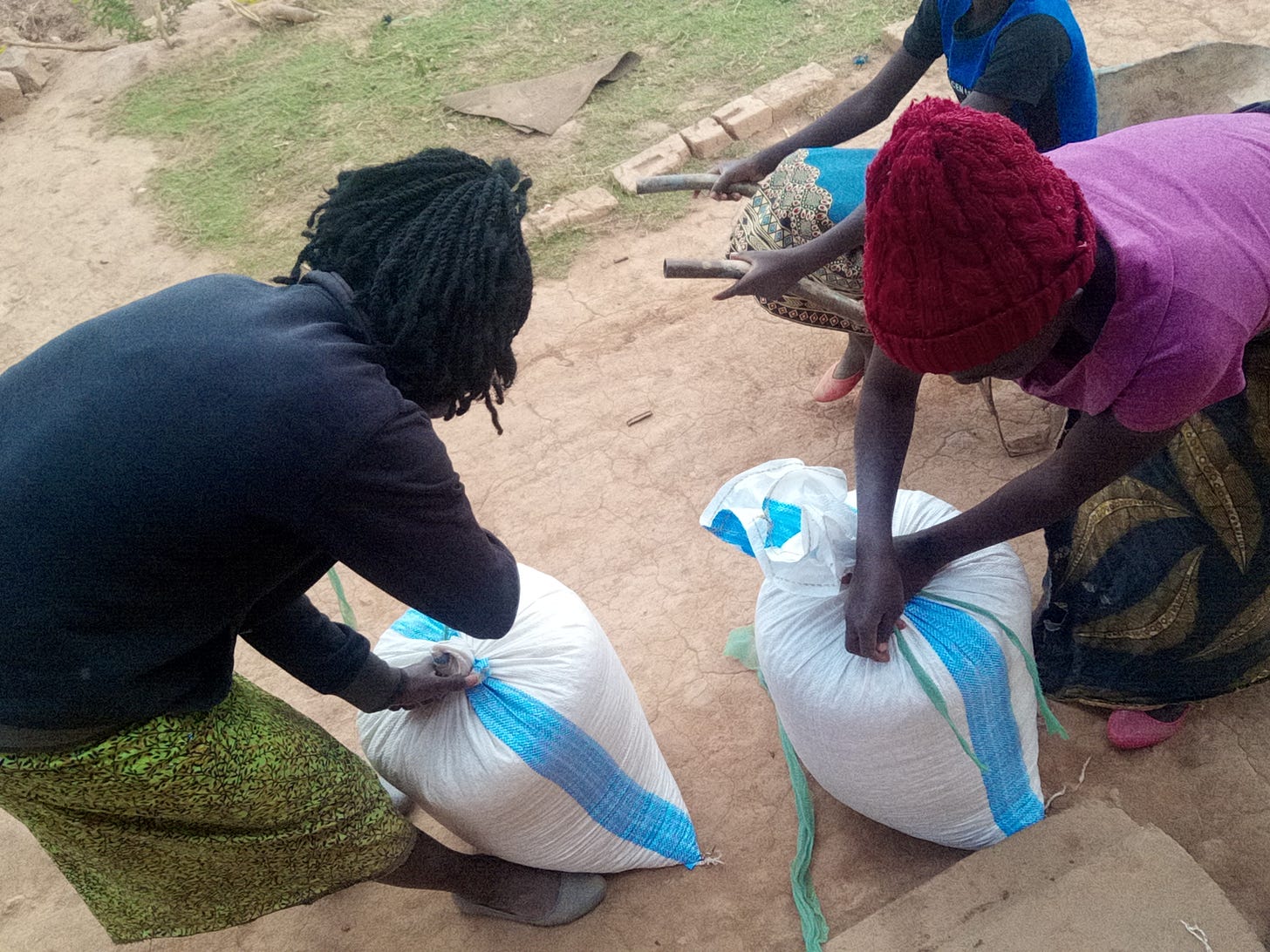
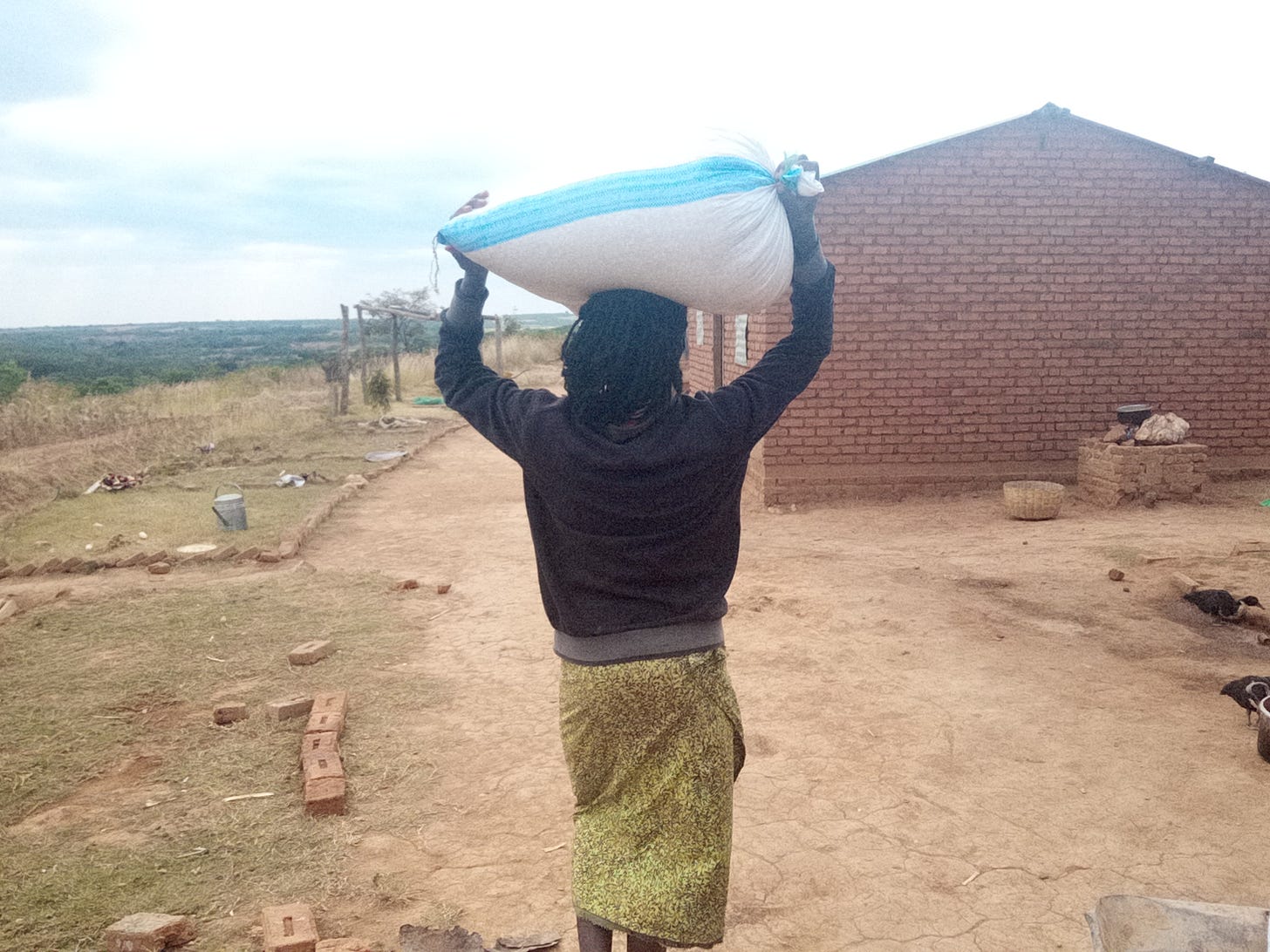
Step #2 - pre-soaking the corn and measuring the price
Once at the mill, the first thing to do is to measure the price of milling and soak the corn in water. The soaking takes just a few minutes and helps the corn go through the mill.
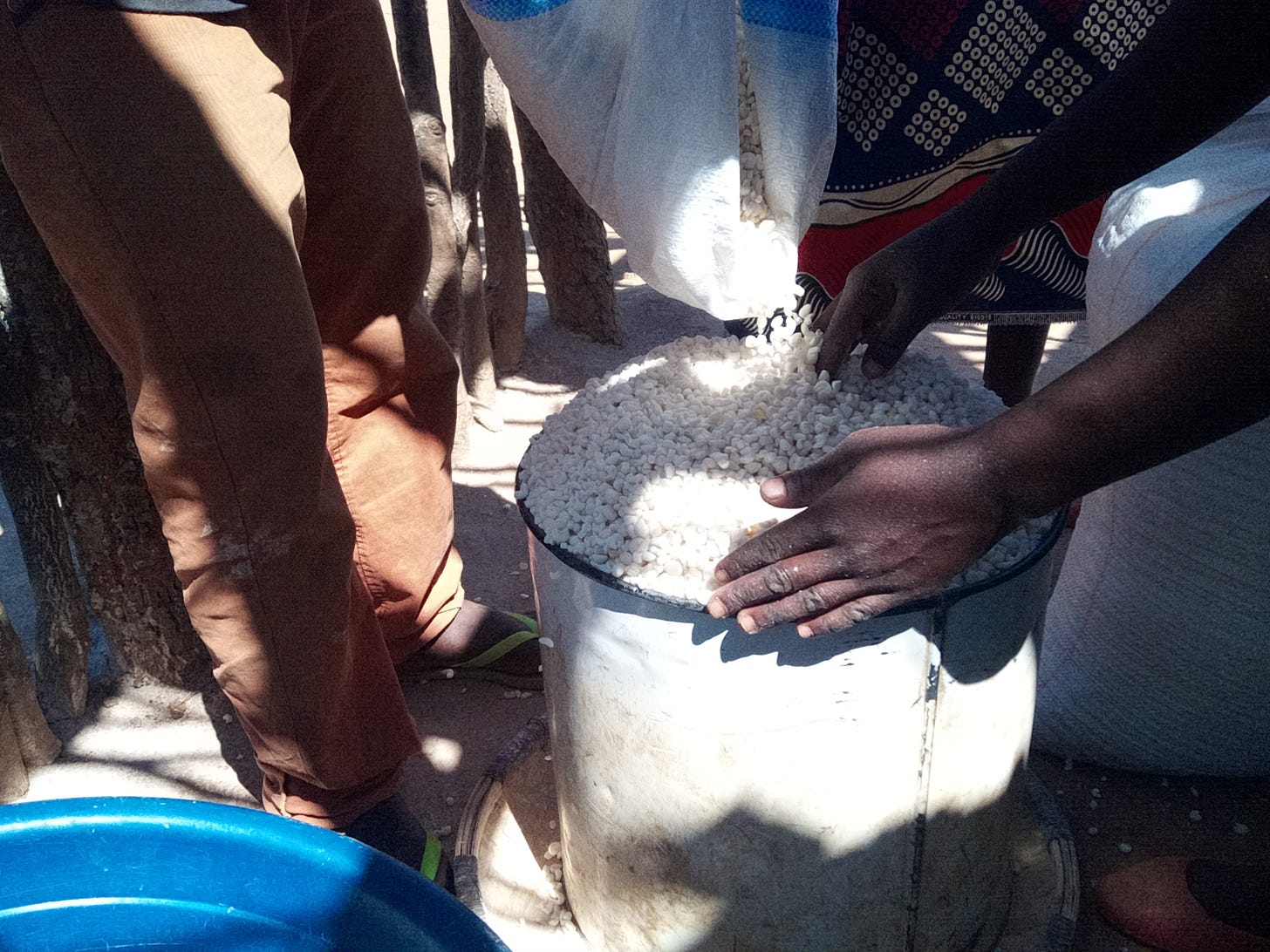

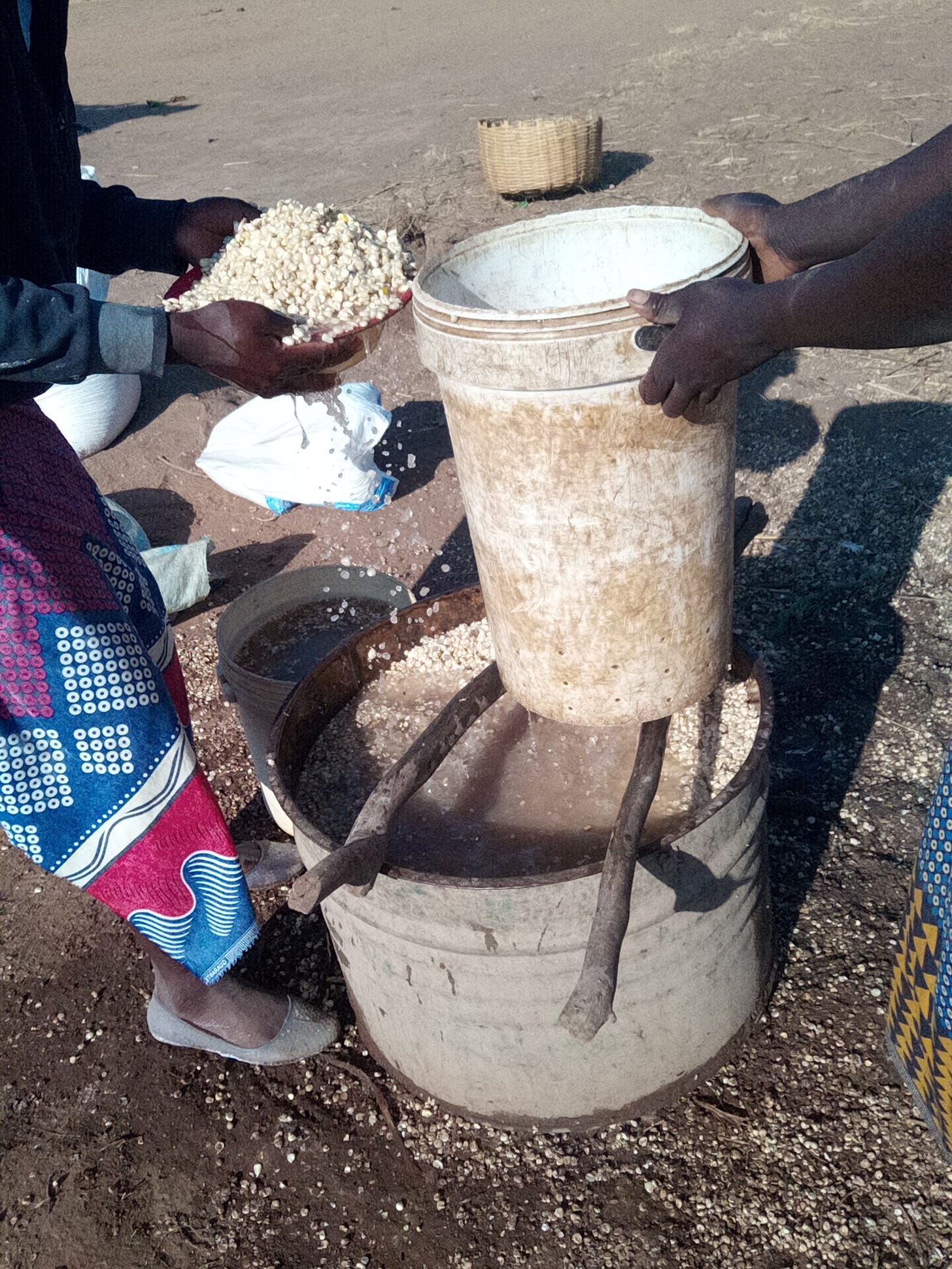
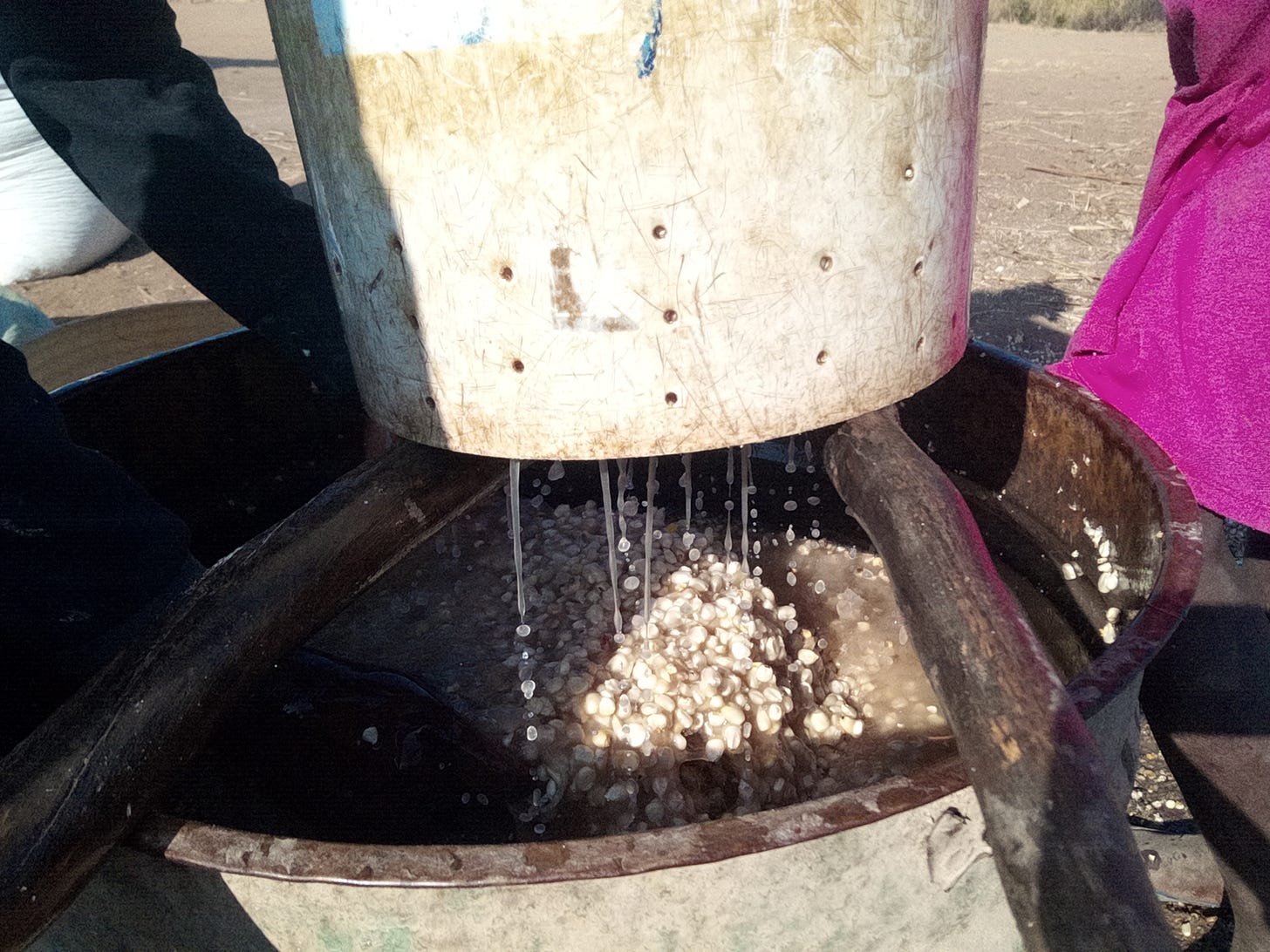
Step #3 - removing the bran (kuchokola)
After soaking for a couple of minutes, the corn goes straight into the mill where the corn bran is removed (i.e. the skin of the corn, which is mostly indigestible fiber). In ChiTumbuka - the local language - the process of removing the bran is called ‘kuchokola’.
The milling process leaves two products; the corn kernels and the corn bran. The kernels are used to make flour which is then used to make food, whilst the bran are used to feed livestock, usually chicken, pigs or oxen at work. Not everyone wants to carry the bran all the way back home - which is understandable if the mill is 5 km away from your village - and will sell the bran to the mill or to other people in the nearby village. Usually a 50 kg bag of bran sells for about MWK 1000 (which is about $0.80). In ChiTumbuka, the remaining corn kernels are called ‘mphale’ while the leftover corn bran used to feed livestock is called ‘gaga’ (somehow, that always reminds me of a certain lady called Gaga. Maybe she got that name because she was always feeding her chickens with corn residues from the mill?)
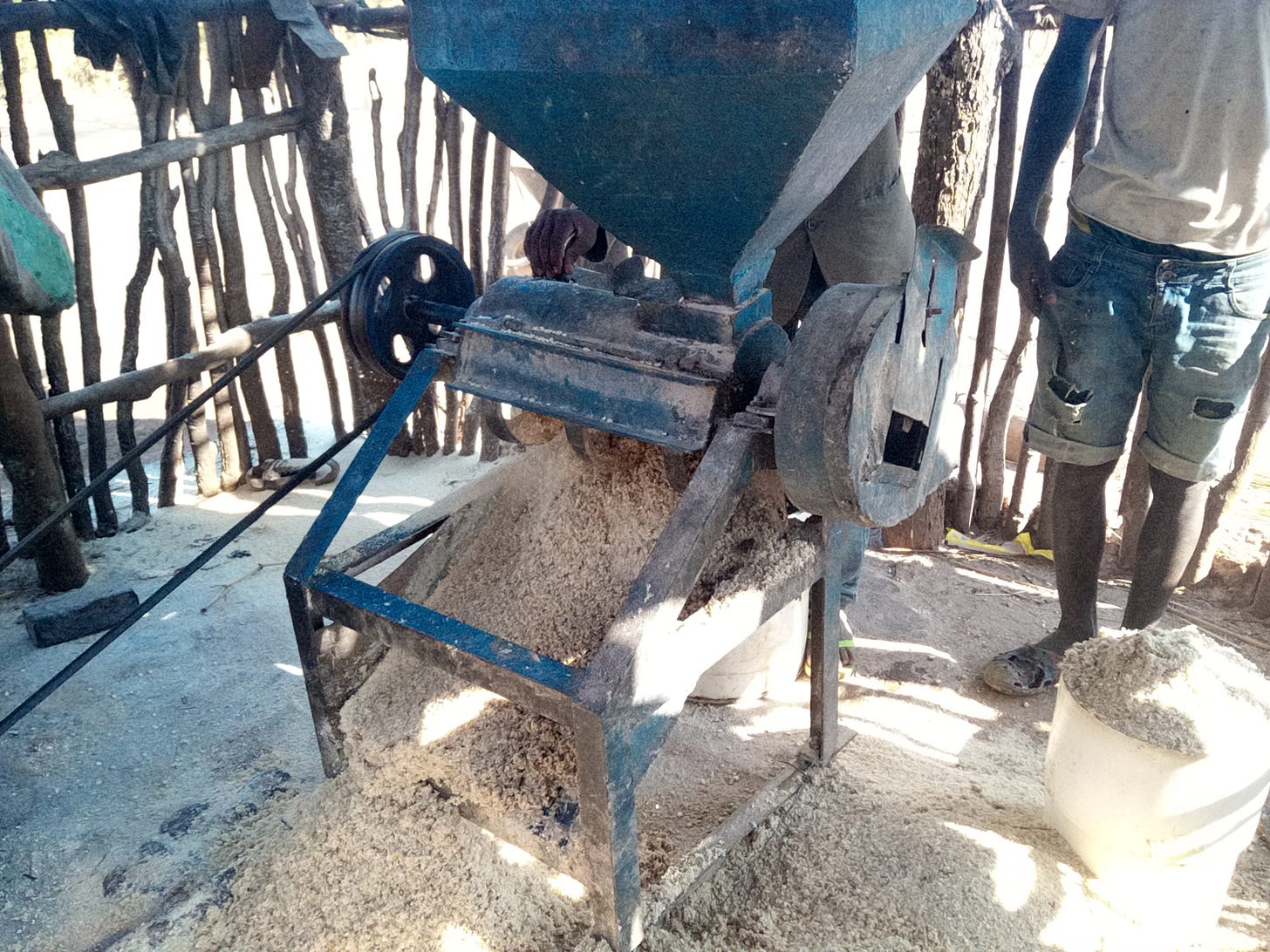
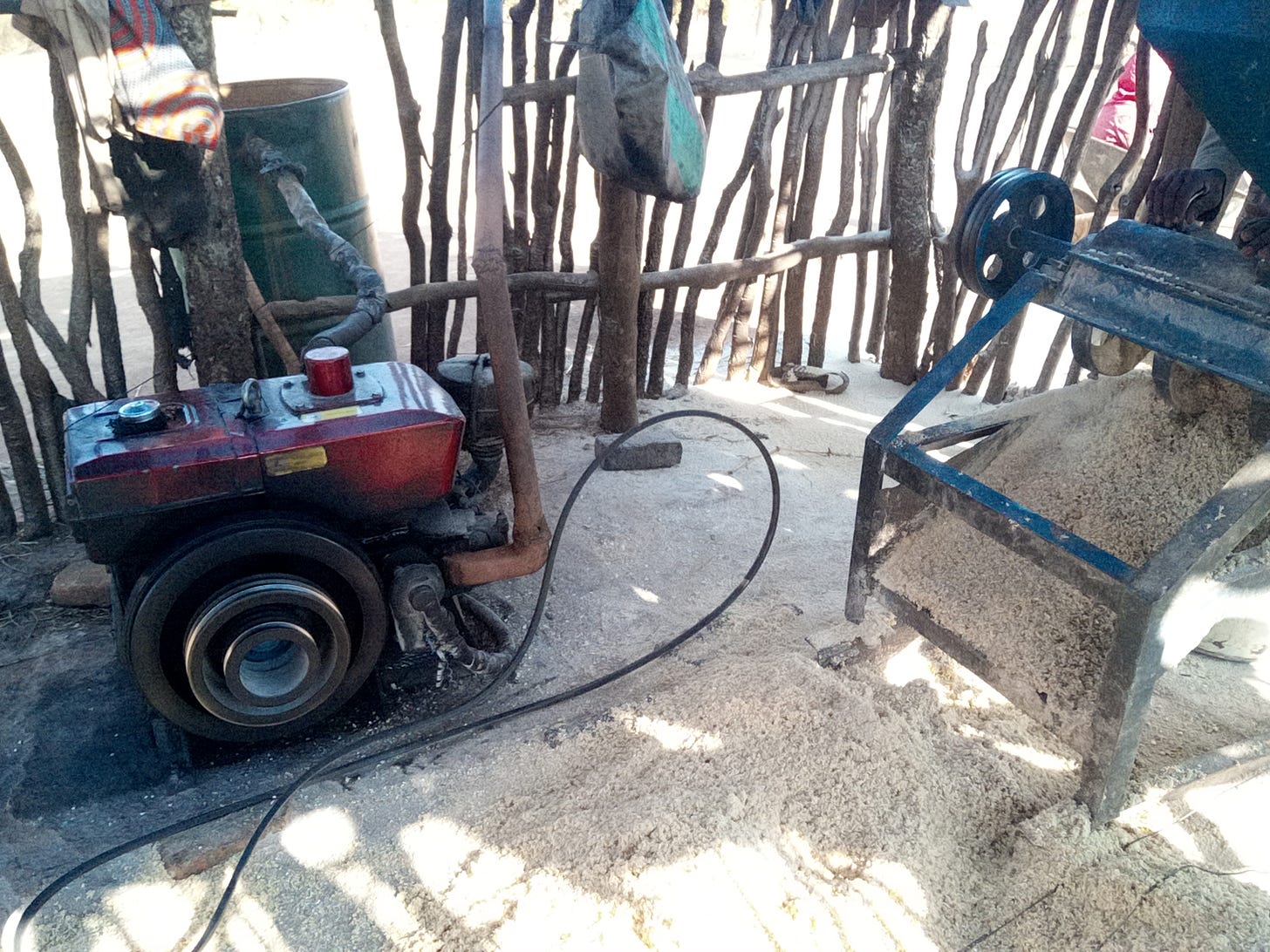
Step #4 - manually removing remaining brans from kernels (kupheta)
After ‘kuchokola’ (the first milling), everything has to be taken back home again. The next step then is to manually remove the remaining ‘gaga’ (the corn bran) from the ‘mphale’ (the corn kernel) in a process called ‘kupheta’. If going to the mill is a bit far, or you’re otherwise feeling lazy, you can skip this step and go straight to the second milling process to make flour right away. Doing so will yield a different kind of flour called ‘grandimil’ which is generally considered inferior to the pure white flour. 'Grandimil’ is the kind of flour you can buy ready packaged in groceries, hence the local word being derived from English ‘grand’ and ‘meal’.
Step #5 - soaking the ‘mphale’ overnight
Removing the remaining bran might seem like a lot of extra work, but a person who has the hang of it will do the entire 100 kg in 30 minutes. The main reason why everything has to be brought back home is to soak the ‘mphale’ (the kernels) overnight. Again, if your village is 5 km away from the mill, you can usually leave the ‘mphale’ to soak at the place of somebody you know and trust.
Step #6 - drying the ‘mphale’ in the sun (kunyika)
After soaking the ‘mphale’ overnight, it has to be dried in the sun before it can be taken to the mill a second time. This can of course be a problem on a muggy day, so the process takes anywhere from hours to a couple of days. The most troublesome part of drying ‘mphale’ is that you have to keep it away from rain, dust and browsing livestock. The process of drying is called ‘kunyika’ and the grass mat used for drying the corn is called ‘mphasa’. A ‘mphasa’ is also what the majority of people use to sleep on at night (not the same ones used for drying food, obviously).
Step #6.b - drying the ‘gaga’ in the sun
You can simply give the ‘gaga’ directly to your livestock while it is still damp, but it wouldn’t store well in that state (remember the corn was soaked briefly before going into the mill, so the bran is all wet). ‘Gaga’ will also get really hot if you just leave it in a damp pile, the same as with an ordinary compost pile. Therefore it is normal to sun dry the ‘gaga’ as well.
Step #7 - wrapping up, cleaning the ‘mphale’ and taking it all back to the mill again
Usually some twigs and dirt get into the ‘mphale’ while it is drying outside. So before taking it back to the mill, people take another 10 minutes to manually remove foreign objects - the same process of ‘kupheta’ as in step #5.
Step #8 - Milling flour (kugayisa)
Back at the mill, the price of milling must be measured again - as in step #2. After sorting out the financial part, the mill operator will go to work milling the ‘mphale’ into flour.
‘Kuchokola’ (removing the bran) and ‘kugayisa’ (milling the flour) is done by two separate pieces of equipment. Not all maize mills have both of them, but most do, including ours.
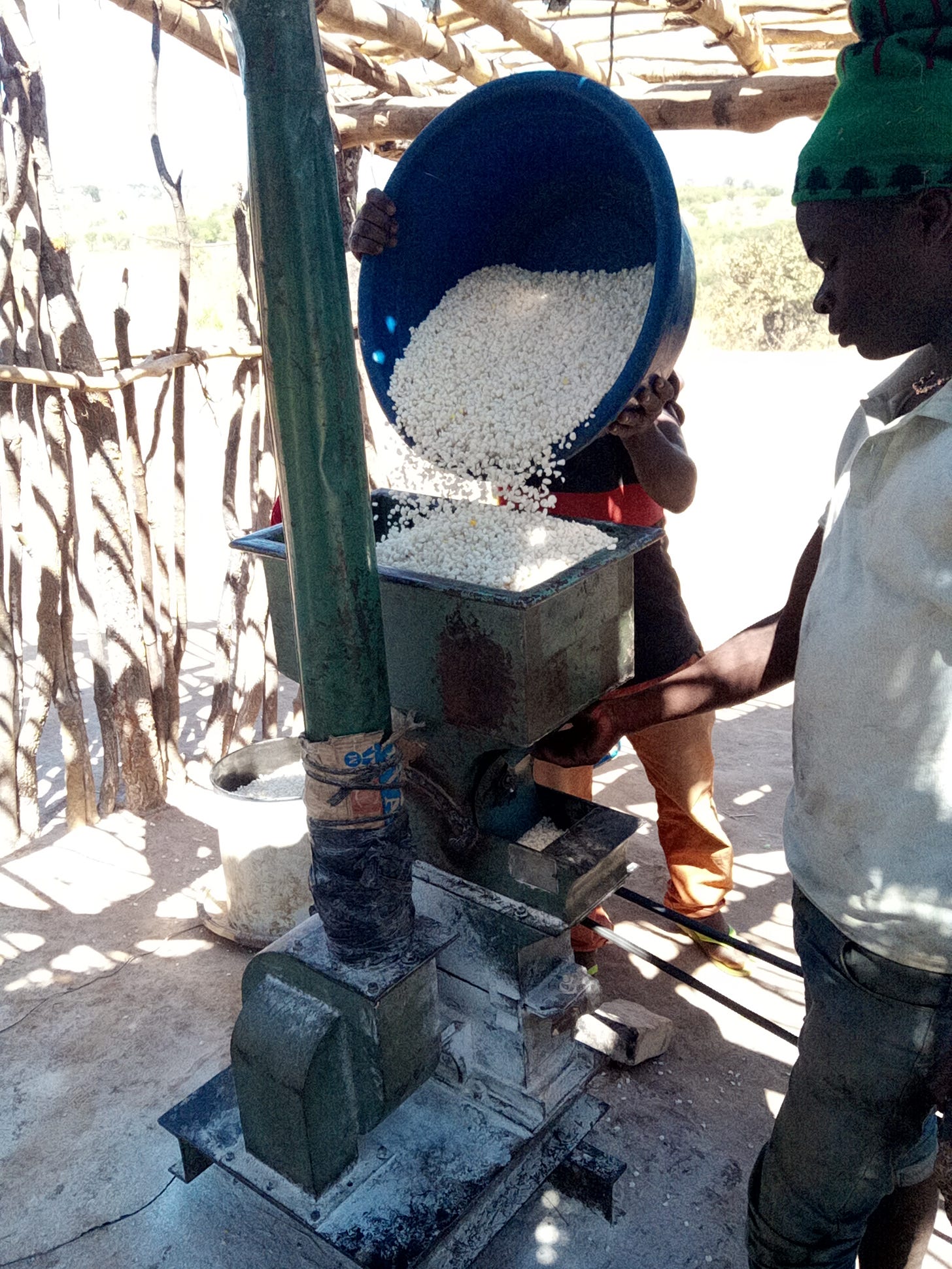



Step #9 - Drying the flour
Turns out the flour isn’t quite dry yet, so after milling, the flour has to be put straight back into the sun again (it is not necessary to dry the flour which one intends to cook right away). Naturally, the flour is very susceptible to being carried away by the wind and the rain, so it is necessary to watch out for sudden changes in the weather, otherwise, the entire week’s worth of food might go down the drain - quite literally. On the upside; flour is too dry and fine-grained for chickens to feast on. The end product is a pure white flour called ‘ufu’ in ChiTumbuka.
Bonus round: milling soya flour
Milling Soya for porridge and bread is a lot simpler that milling ‘ufu’. The only hassle with soya is the need to remove tiny pebbles and stones before taking it to the mill. Beside that, there is no soaking or drying, and you only go to the mill once for making flour. It is possible to do that with corn as well, yielding a type of corn flour called ‘mugayiwa’, although many people complain it gives them stomach problems. In fact, soya in usually mixed with with corn to make soya flour (soya is comparatively expensive).
Concluding remarks
In the documented trip to the mill, 105.8 kg of dry corn yielded 61.28 kg of dry flour and 21.1 kg of ‘gaga’. The milling altogether costed MWK 5,400 (~$4.50). I estimated that a competent team of people took a minimum of 240 minutes between themselves to complete every step of the process - but that’s when you’ve only got 200 meters to walk to the mill and nothing breaks down along the way. In all fairness, a total of 240 minutes/week for a large family isn’t that bad.
All three kinds of corn flour are overwhelmingly used to make just one dish, ugail; a thick, white, porridge-like paste made by simply boiling corn flour in water and stirring it around - which looks simple, but is absolutely exhausting. It is reasonable to estimate that most people in the villages eat ugali twice or three times per day, which is why 61.28 kg of flour gets eaten in just one week. Unfortunately, corn flour and the resulting ugali isn’t very nutritious.
The work of preparing flour is customarily a women’s job, as one can see from the pictures. Gender relations are slightly more complex than what meets the eye, so beware of jumping to conclusions. Many women here see house related work as their profession, and take quite a bit of professional pride in carrying out their work in an orderly, efficient and competent manner.
Millet, sorghum and dry hominy can also be ground at the local mill. Presumably, other dry grains and pulses too, but I have never seen that. If a certain filter is removed, the mill can also handle animal feeds, like sunflower cake, fish meal and ‘gaga’ (we have tried).




